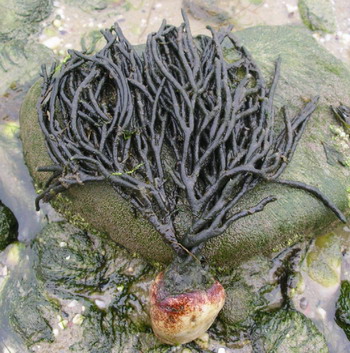 |
Codium fragile (Suringar)
| Division | Chlorophyta | |
| Class | Chlorophyceae | |
| Order | Codiales | |
| Family | Codiaceae | |
| Genus | Codium | |
| Species | Codium fragile (Suringar) | |
| Synonyms | Codium mucronatum J. Agardh, C. mucronatum f. californicum J. Agardh | |
| Common names | Dead man's fingers, Sputnik weed, Oyster thief, Green sea fingers, Green Sea Velvet |
 |